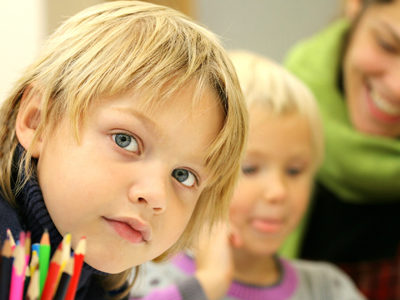OVERVIEW OF CHILDREN’S PROGRAM
The Children’s House is an environment designed for young children. The combination of beauty and order attracts children to explore. Children choose activities, working purposefully and independently. The freedom to choose their own activity and to repeat as long as they like encourages self-directed activity and deep concentration. The activities meet children’s interests and developmental needs fostering spontaneous, self-directed choices.
There are four main areas in the Children’s House: Practical Life, Sensorial, Language and Mathematics. Considerable emphasis is also placed on cultural aspects such as music, art, geography, botany and zoology.
Practical Life: The activities of Practical Life instill care of the self, care of others and care for the environment. Many of these activities are ones children see done at home, such as sweeping, washing, ironing, arranging flowers, etc. Grace and courtesy support children’s social development. Children develop fine and gross motor coordination and control. They learn to work at a task from beginning to end and to assume responsibility for themselves and for their classroom environment.
Sensorial: From an early age, children seek to sort, order and classify their experiences and impressions of the world. The Sensorial materials attract children to explore these physical qualities of the world through his sense of touch, hearing, sight, taste and smell. Through this exploration, children refine their perception and form a basis for abstract thought. Precise language is attached to these sensorial experiences to support classification and self-expression.
Language: The Montessori environment provides rich spoken language including conversations, stories, poems, songs and finger plays. Sandpaper letters help children link the sounds and symbols of our written language, so that they begin to write before they read. As they trace these sandpaper letters they are practising the movements required to write these cursive letters. Earlier activities of Practical Life and Sensorial have prepared the hand and fingers for the act of writing. With the familiarity of the sounds of the letters, children discover that they can read back labels and messages. They are introduced to further keys to support the irregularities of reading English and to explore the function of words and structure of sentences. Children develop fluency and a deep appreciation of what they read.
Mathematics: Children’s minds have been awakened to mathematical notions such as dimension, gradation, identity similarity and sequence through sensorial experience. The concrete materials help children to develop a solid understanding of mathematical concepts, prepare them for reasoning and help develop problem-solving capabilities. Children learn to add, subtract, multiply and divide and to see the numerical, geometrical and dimensional relationships within the decimal system.




